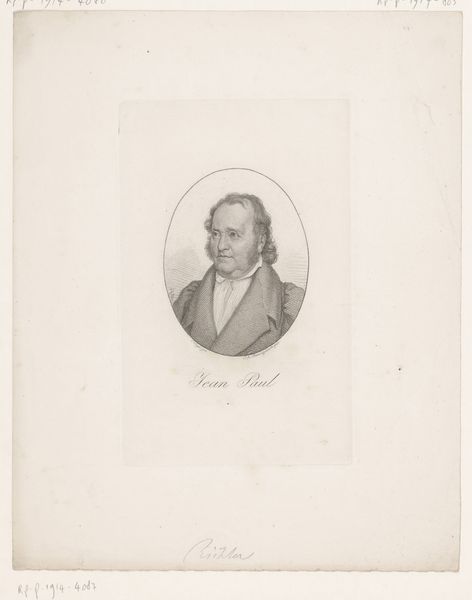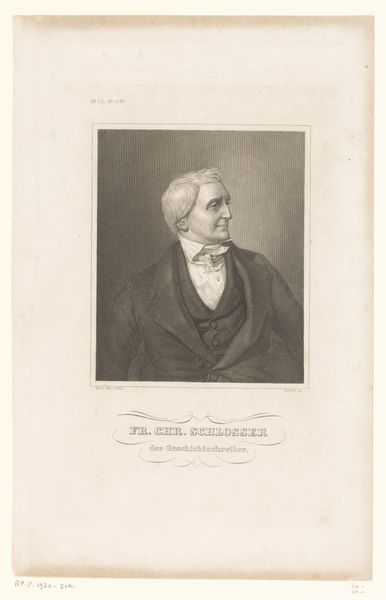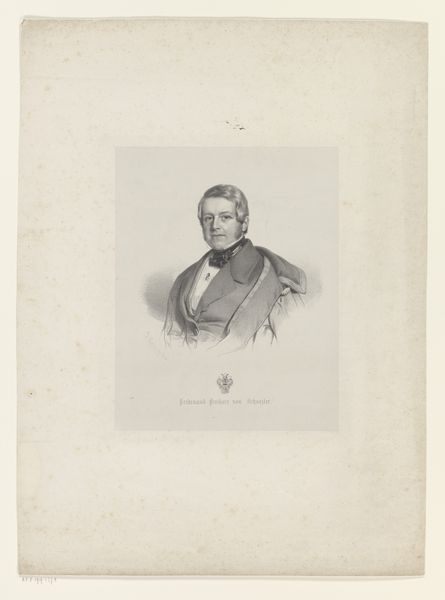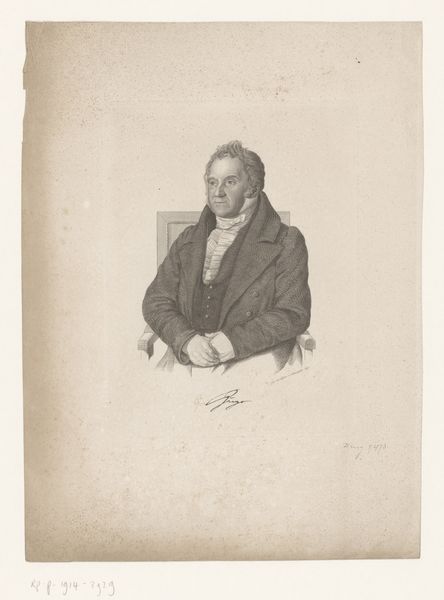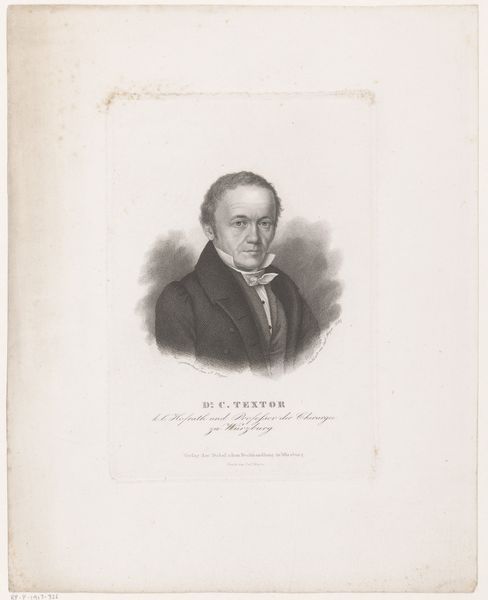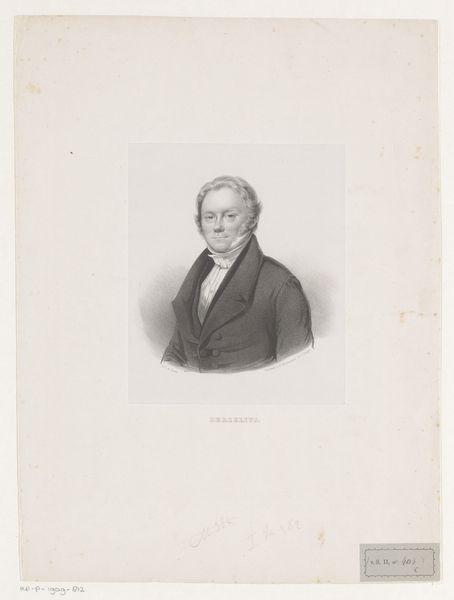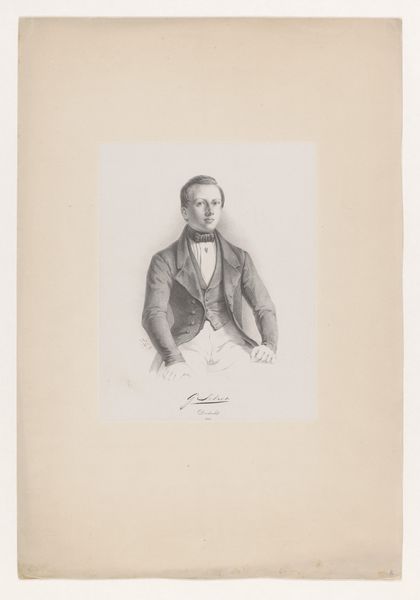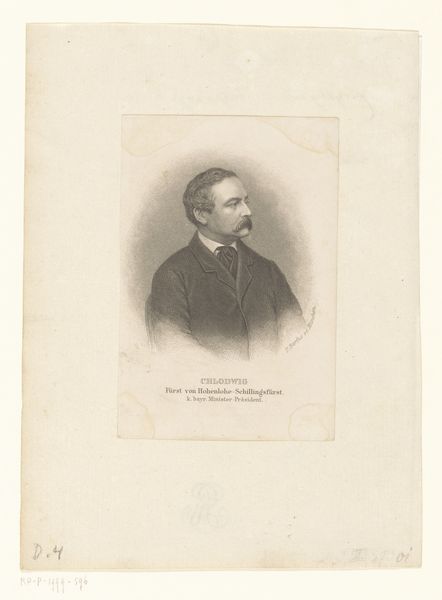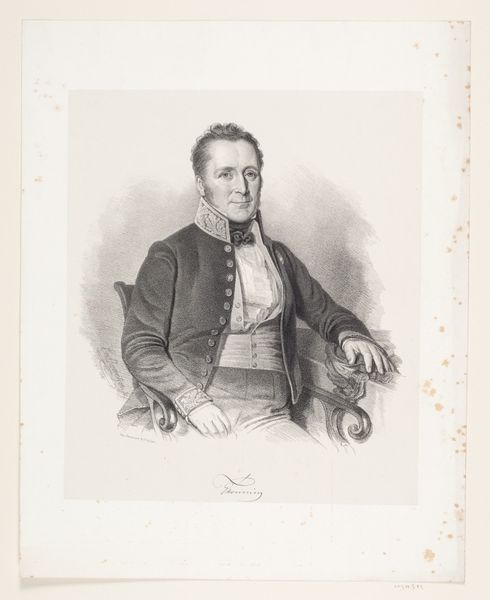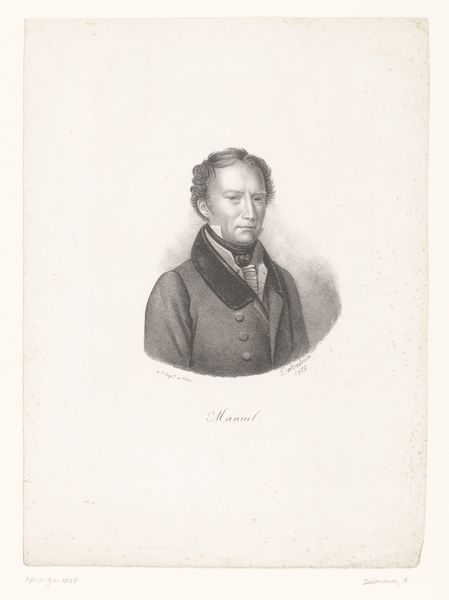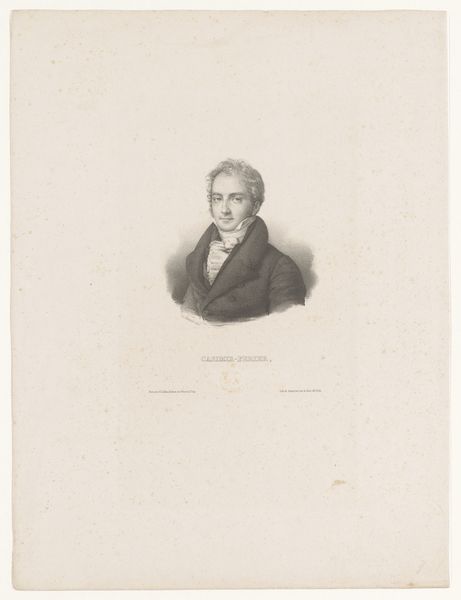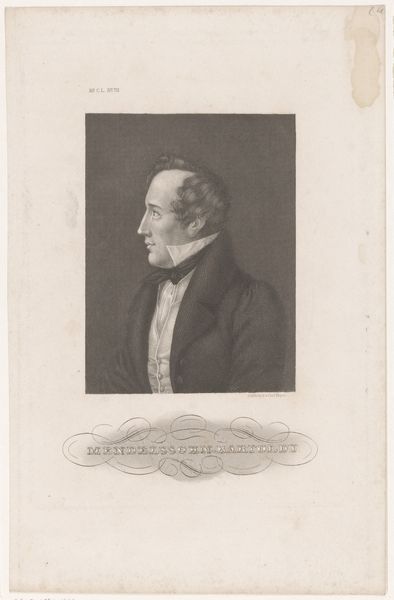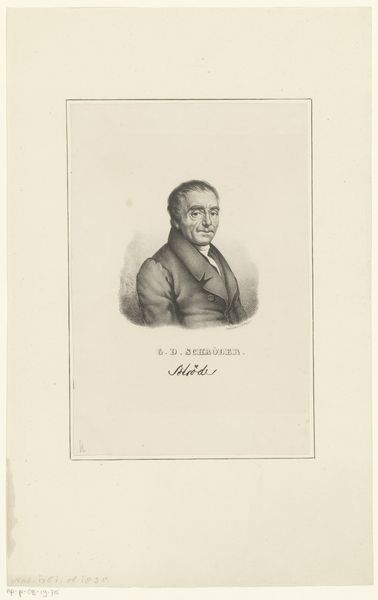
engraving
#
portrait
#
aged paper
#
light coloured
#
romanticism
#
history-painting
#
academic-art
#
engraving
#
realism
Dimensions: height 245 mm, width 165 mm
Copyright: Rijks Museum: Open Domain
Curator: This is a portrait of Joseph von Radowitz, dating from around 1840 to 1855. It was created by G. Metzeroth, using engraving techniques. Editor: The detail is striking. It feels like a very controlled image, even a bit stiff in its formality. The light is nicely done, focusing the attention on Radowitz's face and hands. Curator: Right. Metzeroth captures Radowitz at a moment when he was a prominent Prussian general and statesman. Engravings like these were very common in the 19th century for circulating images of important public figures, bolstering their image and propagating their ideas. Editor: Engraving allowed for mass production, essentially turning Radowitz's likeness into a commodity. Consider the labour involved: the engraver carefully etching away at the plate to create this reproducible image. Curator: Absolutely. This engraving would have been a part of the visual culture, almost functioning as propaganda by association. He is posed with books nearby. Editor: The books hint at his intellect and refinement. It's carefully constructed. Also the way the aged paper and the limited tonal range of the engraving speak volumes. There's a quiet dignity, but also a starkness in its materiality. It is a statement on the technology and the accessibility to information in that time period. Curator: It really reflects the power dynamics and the prevailing notions of celebrity in that historical period, with Radowitz being deliberately framed for posterity, making this accessible to a mass audience. Editor: It’s intriguing to consider the chain of production, from the artist to the publisher, to the dissemination. Each step influencing how Radowitz was perceived, and how history remembers him. It seems less about the subject himself and more about projecting power and class through material representation. Curator: Considering that, it is still quite revealing how artistic styles of the time period helped establish not only the visual elements, but also public opinion of the period, for political gains and status. Editor: Indeed. And for me, it grounds this historical figure in the tangible: the feel of the paper, the precision of the engraving tool, the societal and economical impact of this piece—those are critical to understanding both the art and its influence.
Comments
No comments
Be the first to comment and join the conversation on the ultimate creative platform.
